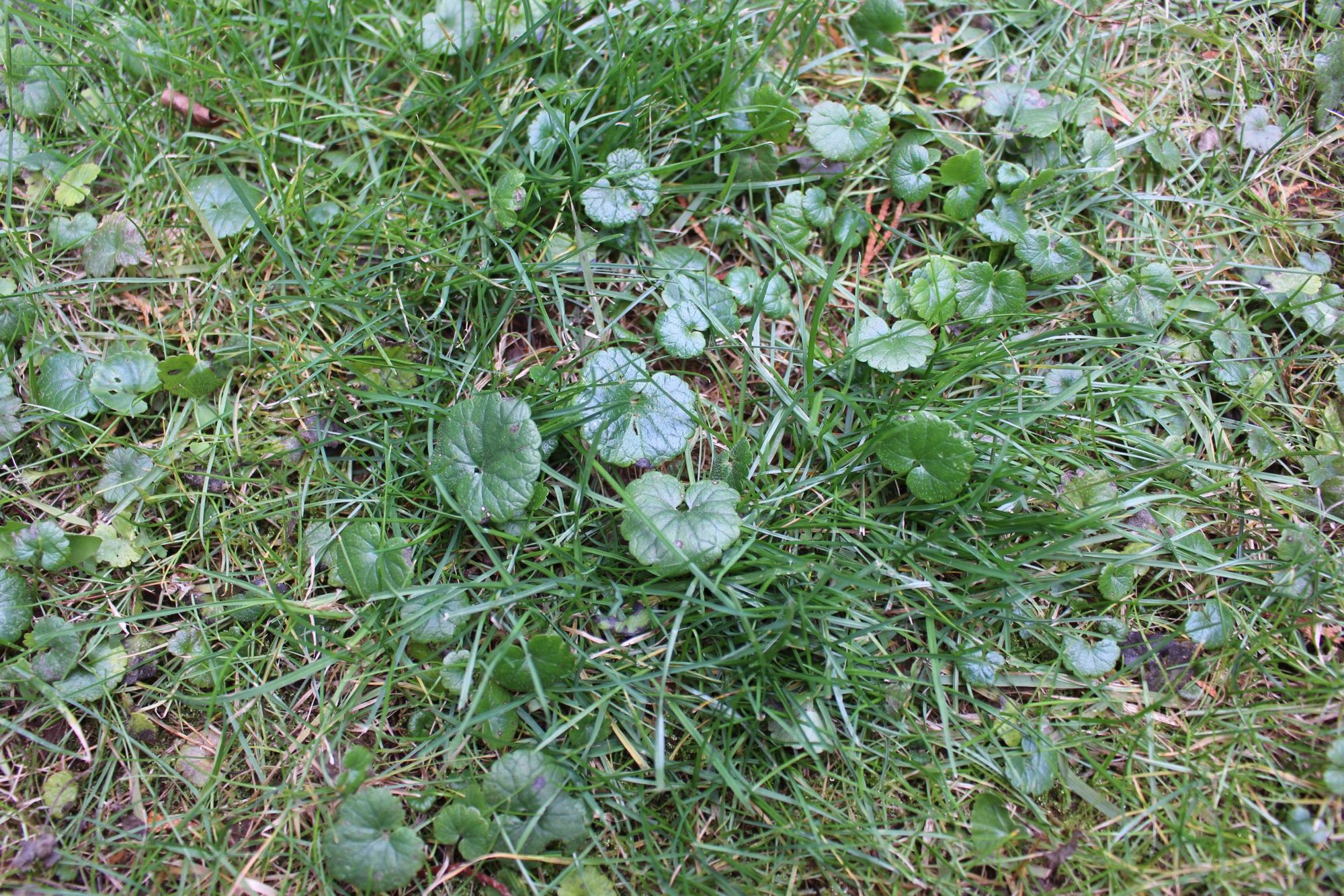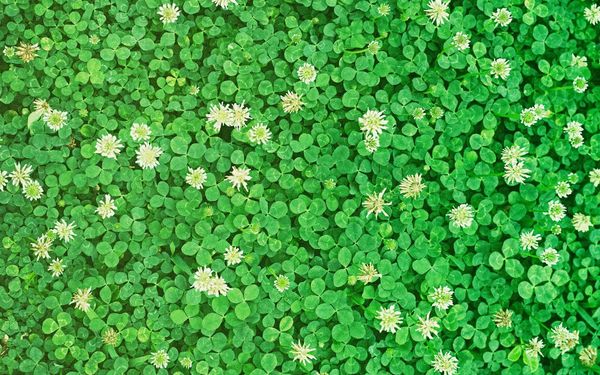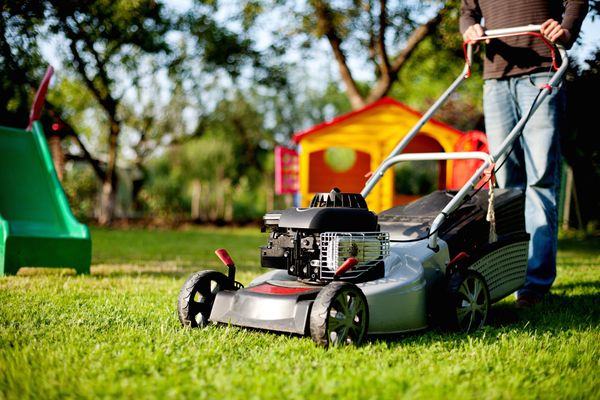Sticker weeds are invasive plants that spread swiftly, cause trouble if stepped on with bare feet, and increase. Numerous weeds and grass species are together referred to as "stickers." They are all invasive species that suffocate other plants.
Since they often harm lawns. As a result, many gardeners need help removing stickers from their yards, gardens, and other areas. The finest methods for controlling sticker weeds will be revealed in this article.
How to Remove Stickers Using Natural Methods
Natural treatment and prevention methods are sometimes more than sufficient to get rid of the stickers in your yard. Here are some of my greatest recommendations for getting rid of sticker weeds naturally from your yard.
1. Remove Stickers by Hand
When the plants are still young, autumn or winter is the ideal time to pull weeds. A delicate weed with tiny, unestablished roots will be more easily removed.
If you manually remove new or established stickers from your lawn, you must eliminate any signs of the plant. This comprises the roots, leaves, stalks, and seed heads.
I advise loosening the dirt around the base and roots of the sticker weed by digging into the ground at least 6 inches away from the main stem. Make careful to remove all remnants of the seeds using a weed puller or a portable fork to pluck out the whole plant.
When removing established stickers, more caution should be used. First of all, if handled without proper gardening gloves, their burs would be razor-sharp, and secondly, any violent handling or shaking may quickly spread the seeds.
The sticker weed can only grow roots or generate seeds if all traces of the plant are removed from the ground.
2. Apply a spray of white vinegar solution
For an effective do-it-yourself weed treatment, combine one gallon of white vinegar, one cup of table salt, and one tablespoon of dishwashing detergent.
Even though this approach works, it's crucial to note that it's non-selective. It will destroy nearby plants if you sprinkle it on them as well, just way it kills weeds.
3. Drinking To Stop Weeds From Growing
Mulch is regarded as a cultural remedy for sticker weeds since it alters environmental culture without using harmful chemicals like pesticides. It effectively restricts how much water and sunshine the stickers are exposed to. They perish when they are unable to capture sunlight anymore.
Remember that replacing organic mulch more often than synthetic mulch will be necessary. An excellent approach to totally inhibiting the development of weeds is to apply a layer of mulch over pre-emergent herbicides.
The cost of synthetic mulch is often higher but for good cause. These materials are a wise investment since they may endure for four years. Geotextiles, landscape cloths that won't harm the plants, are typical synthetic mulch.
They allow air and water to travel through while limiting the sunlight that reaches the vegetation.
In rare cases, you can discover that some weeds in your garden have such deep roots that they can push through mulch. Texas A&M University claims that using newspapers will help to tackle this issue.
Just cover the soil with a layer of newspaper before mulching it. As a result, the layer between the weed and the mulch will get thicker, increasing the weeds' lack of oxygen and sunlight until they are eventually killed.
4. Mow Your Lawn Frequently
This approach is clear-cut. Weeds can never reach full size if you consistently cut them down with grass.
However, your grass will still have some stickers after using this method. The blooms of sticker weeds sometimes grow tall and swiftly, in contrast to many other species of broadleaf weeds that produce low-flowering flower heads, which may be prevented from spreading by frequently mowing your grass.
Weeds that blossom lower or higher than the mowing blade might cause issues. The danger is that the weeds may not be cut, or the blossom heads may be cut off, dispersing seeds over your grass.
It is essential to compare the height of your mower blades to any flowers on your yard decals.
5. Keep Lawns Hydrated
A lot of weeds grow as a result of improper lawn watering. Because the grass is overwatered, certain weeds can only grow there. Weeds love mild, frequent irrigation since they need regular access to water. Therefore you should steer clear of this kind of irrigation.
Watering the grass thoroughly is seldom recommended unless you take care of the watering requirements of a freshly planted lawn (either from seed or covered with sod). That way, there will be little water for weeds to thrive.
However, preventing dehydration is as crucial. You want a sufficient amount of water to prevent your grass from perishing. Weeds have more space to grow if your property has bald spots from dried-out or dead grass. As their roots extend, weeds become more aggressive as a consequence. They'll then use all the available water and promote further development.
Chemicals for Sticker Weed Removal
If you're pondering how to get rid of decals in your yard, you should know that, despite being less natural, chemical remedies are frequently more effective.
An efficient long-term solution may be achieved by using herbicides to destroy the weeds and pre-emergent chemicals to stop them from sprouting again.
1. Apply a Pre-Emergent before weeds emerge
Pre-emergent herbicides should be used, as the name implies, before the weeds emerge. They are experts at eliminating weed seeds before they grow. Pre-emergents will obliterate the seedlings in your yard even if the wind transports seeds there. The pesticide only has to be used before the plant sprouts.
Pre-emergent herbicides should be used once a year, ideally in the fall. According to the University of Florida, pre-emergent herbicides should be used in October when temperatures are between 55 and 60 degrees Fahrenheit since most sticker weeds are winter plants.
According to MSU and UGA researchers, burweed must be attacked annually. Burweed will undoubtedly reappear if the pre-emergent herbicide is not used annually.
Pre-emergent herbicides shouldn't be used to kill mature weeds, to name a few points to bear in mind. If you wish to eliminate certain weeds, use post-emergence herbicides since they will not impact them.
Second, pre-emergent herbicides must be applied thoroughly for them to be effective. For the herbicides to work, you need to give the soil and the places where stickers would grow a good soak.
Last but not least, pre-emergent herbicides need plenty of water to work. After applying, You must cover the herbicide solution with a half-inch of water.
2. Use post-emergent products to eliminate grass stickers
Using post-emergent treatments is the best method for eliminating mature stickers. These herbicides function by depriving the weed of food, starving it to death.
Plants immediately start to wilt and become yellow after being treated with pesticides. Soon after, growth will begin to get twisted, roots will develop more slowly, and leaves and stems will become black. The plant may be dug out from the ground and disposed of after it has died.
Systemic and contact herbicides are the two different categories of post-emergent herbicides.
The latter harms the plant and works better on young plants. Differently, systemic herbicides damage the plant from the inside out, stopping it from eating.
It's critical to consider whether a herbicide is selective or non-selective when selecting it. Non-selective herbicides eradicate whatever they come into contact with, including your grass and any nearby vegetation.
However, selective herbicides only eradicate certain plants. Choose selective herbicides if you know which weeds need to be removed. You won't run the danger of damaging any of the plants you wish to maintain in that manner.
Some selected broad-spectrum post-emergent herbicides are tailored for weeds, even if you cannot identify the specific weed species.
3. Use A High Nitrogen Fertilizer To Fertilize
The most crucial ingredient for grass is nitrogen, which promotes the formation of strong, healthy roots and lush, green grass blades. Therefore, applying nitrogen-rich fertilizer to your grass will facilitate above- and below-ground growth.
Weeds are less likely to develop in the first place if you have robust, healthy growth and tightly packed grass blades. The weeds can't grow since there isn't enough space for them.
What Does This Sticker In My Yard Mean?
The name "sticker weeds" refers to various species, which I'll discuss in the section below.
The ease with which stickers spread is a typical feature. These weeds may quickly spread from a single plant to an overpopulated population (mainly in yards with limited space).
Because of how they disperse seeds, they are nicknamed stickers. These weeds feature tiny burs that cling to animals like needle-like thorns. After some time, the burs spontaneously detach and sprout in a different location.
Though initially from Europe and the Americas, sticker weeds have expanded to Asia, Africa, and Australia.
Effective Strategies for Sticker Weed Control
Dealing with sticker weeds can be a challenging aspect of maintaining a healthy lawn, especially considering how painful their stickers can be to bare feet. One crucial aspect to understand is how sticker weeds spread. These weeds disperse their seed pods throughout the yard, which can lead to a significant increase in weed problems if not addressed promptly. To prevent this, ensure that your lawn remains healthy and robust, which can deter the growth and spread of these weeds.
Additionally, keeping an eye on the soil temperature is vital, as seeds germinate under specific temperature conditions. By understanding these conditions, you can take preemptive measures to stop the growth of sticker weeds. In tackling the issue of loose stickers and weed control, it's important to regularly remove grass clippings that may contain seed pods. This practice helps reduce the spread of sticker weeds.
For existing weeds, consider using a post-emergent herbicide in early spring, which is the most effective time for controlling these winter weeds. This method ensures that the weed dies before it can spread further. However, for those preferring a more natural approach, a solution of baking soda and water in a spray bottle can be a gentle yet effective alternative. Keep in mind, though, that this natural solution may not be as effective as commercial herbicides and could potentially kill grass if not applied carefully. Regular monitoring and timely action are key to keeping your lawn free from the nuisance of painful stickers.
Sticker Weed Types
Numerous plant species have "sticker weed" designations.
These plants, known as sandburs or buffelgrass, are members of the Cenchrus genus. A poisonous plant species, most sandburs are native to the Americas but have since migrated to Australia and Europe.
The tiny spine-covered hooks, or "spurs," that stick to clothing or animal hair make sandburs easy to identify. These spurs are not venomous, but they have the potential to harm animals if they consume them. The stimuli may be painful if stepped on or tangled into the fur since they can sometimes grow up to 0.4 inches long.
Except for Antarctica, all continents now include Tribulus Terrestris (Puncture Vine), a type of sticker that may be problematic if discovered in your yard. The bur's long, pointed spines may easily pierce the skin due to their extreme length and sharpness.
Burweed is a weedy shrub with needle-like seeds that cling to passing animals. Animals are mainly used for spreading them. If you see burweed on your lawn, be sure to actively avoid walking on it, as it hurts both people and animals to do so.
Originally from South America, this sticker has now made its way to North America, Australia, New Zealand, and certain regions of Europe.
Which Places Produce Stickers?
Even though sticker weeds are very flexible and can grow in any soil, they thrive best in dry, hard ground.
Initially suited to the warm climes of southern Europe, Africa, and Asia, these plants can spread across lawns, paths, and borders if left untreated — wherever seeds are blown or dropped.
How Quickly Spread Are Sticker Weeds?
Stickers may spread quickly and readily by the wind or animals becoming tangled in the sticky burrs in their hair. These seeds may germinate after being dropped in even the most dry soil.
Fall is when newly grown weeds emerge, and winter is when they reach maturity. The weeds' winter growth is initially significantly (or entirely) reduced, but they will have a spring growth burst as soon as the weather permits them.
They must thus be chopped down right away since, if not, they will take over your yard entirely.
When Should I Clean Up Stickers in My Yard?
Very young plants may be treated with post-emergent herbicides in December, January, and February. Young plants that still need to establish themselves are the ones it works best against. These stickers will swell in the spring and become more difficult to remove.
I also advise applying post-emergent herbicides if more giant stickers have sprouted in the spring. These pesticides will also destroy established plants.
As soon as sticker weeds have germinated, stay away from pre-emergent herbicides. They solely work to stop the germination of weed seeds.
Before the seeds of stickers have emerged, late summer and early autumn are the ideal times to use pre-emergent herbicides. They are designed to keep future sticker weeds out of your yard. When used correctly, pre-emergent herbicides will eradicate any weed that hasn't yet sprouted.
Conclusion
The key to maintaining a lawn wealthy with healthy, vibrant grass and free of pesky intruders like grass burrs and sticker burrs lies in regular and meticulous care. Utilizing proven methods to kill stickers, diligently eliminating lawn burrs, and applying strategies to curb the rampant stickers weeds spread are all pivotal in restoring the splendor of your lawn grass. With time, consistency, and the right approach, these troublesome invaders can be controlled, restoring your yard to its pristine condition.
Lawn weeds, sticker grass, and sticker plants pose significant challenges to homeowners striving to maintain the elegance of their yards. However, with informed guidance and proactive action, these hurdles can be overcome. Transforming a lawn laden with burrs and stickers into a verdant paradise of lush lawn grass involves more than just killing the weeds—it also requires proactive prevention measures to keep them at bay. By implementing these strategies, you're not only ensuring the longevity and health of your grass but also enhancing the overall aesthetic and value of your property.
In addition to choking out valuable plants and stealing their nutrients, stickers may be inconvenient since they can be painful to walk on. Fortunately, they are eradicable. Keep your yard neat at all times. Regularly trim the grass and hand-pull weeds. An excellent technique to destroy them and stop them from regrowing is to use post-emergent and pre-emergent herbicides. Keep in mind that weeds need a lot of water to flourish. They thrive in yards that get excessive water because of this. Water your yard less often but more thoroughly each time rather than regularly. Finally, maintaining a healthy lawn and promoting robust root and leaf development using high-nitrogen fertilizer will result in less space for weeds to thrive.






